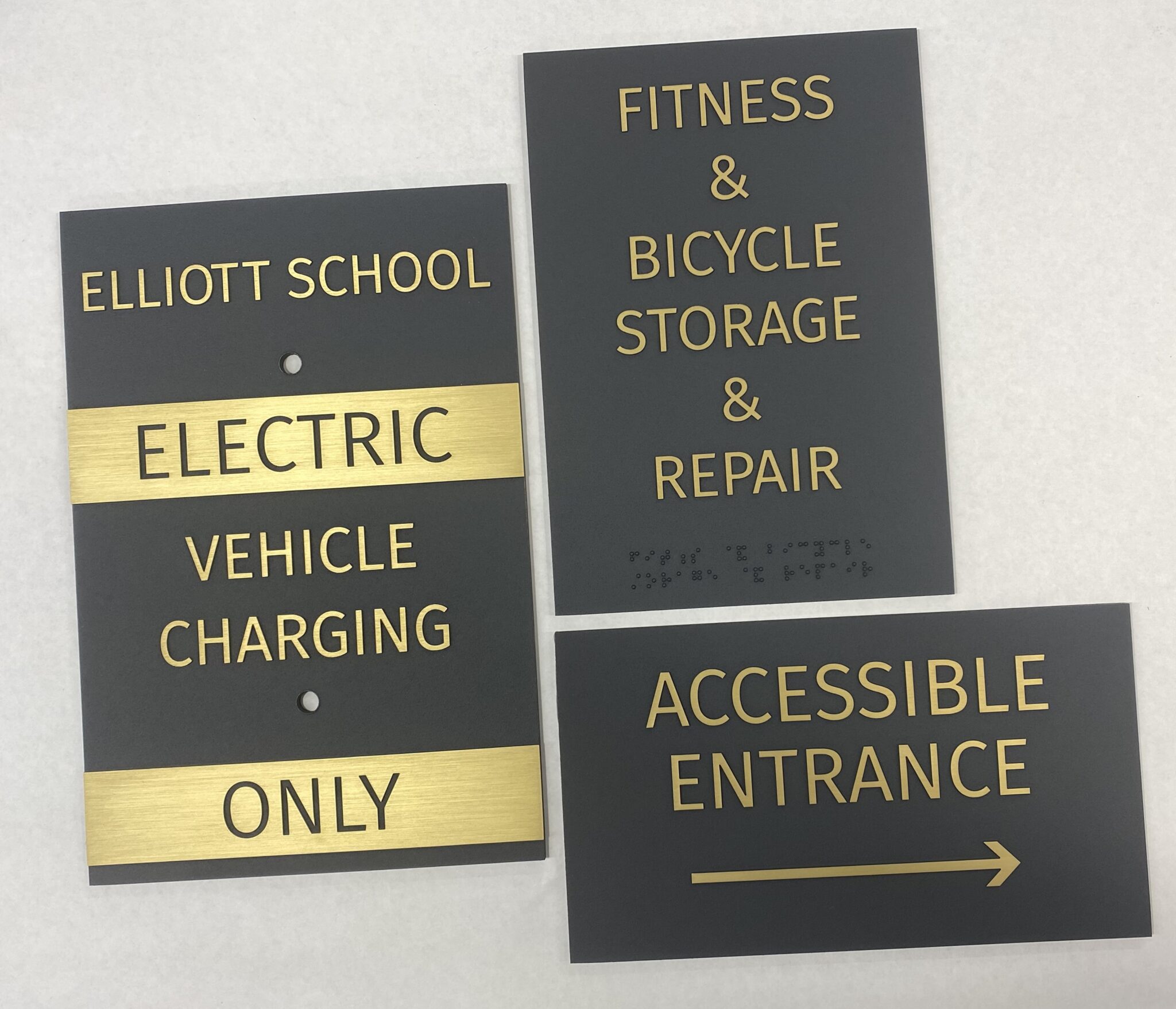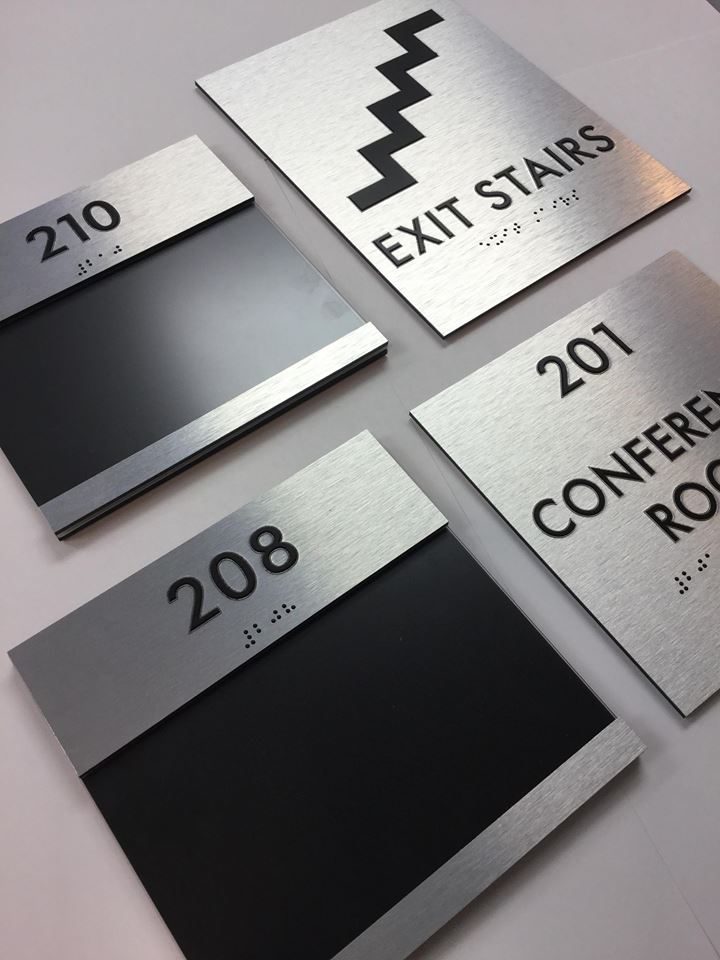ADA Signage: Ensuring Availability and Compliance in Public Spaces
ADA signs plays a vital role in assuring accessibility and conformity within public spaces, substantially adding to an inclusive setting for individuals with impairments. By sticking to ADA standards, signage not just facilitates navigating yet also emphasizes an organization's commitment to variety and equal rights. As we explore the nuances of ADA signs, from tactile functions to make complexities, it's vital to consider exactly how these components integrate to support the legal rights of all customers. What are the common mistakes companies encounter in preserving conformity, and just how can future fads in signage remain to drive ease of access ahead?
Relevance of ADA Signs
In modern-day culture, the relevance of ADA signage prolongs beyond mere conformity with lawful requireds to symbolize a commitment to inclusivity and ease of access for all individuals. These signs are important in creating environments where people with specials needs can navigate public spaces with the same convenience and self-reliance as those without impairments. By offering clear and standardized info, ADA signage ensures that everyone can access centers, services, and information without obstacles.
The significance of ADA signage hinges on its capability to enhance the lifestyle for people with disabilities by advertising equivalent access. It removes the challenges that might or else impede their capacity to take part fully in area life. These indicators serve as noticeable indicators of a company's dedication to diversity and equal rights, mirroring more comprehensive societal worths that champion the legal rights and self-respect of all individuals.
In addition, ADA signage plays an essential duty in public safety. By assisting people to exits, bathrooms, and other vital centers, it ensures that all individuals, no matter physical ability, can evacuate securely throughout emergencies. In summary, ADA signs is not simply a regulatory need however an effective device for promoting a comprehensive and equitable culture.
Trick Aspects of Conformity

Positioning is essential; indications must be installed in areas that are easily visible and reachable. Usually, signage ought to be installed between 48 and 60 inches from the ground to make certain access for both standing and wheelchair customers. Tactile components, such as Braille, are crucial for individuals with aesthetic impairments, giving essential details in a non-visual style.
High-contrast shades between the message and history are needed to boost readability for individuals with reduced vision. The ADA mandates specific contrast proportions to make certain quality. Furthermore, personality size is a key factor to consider, with minimal height requirements determined by the viewing distance to guarantee readability from different angles.
Style Considerations for Availability
Creating available signs requires a careful approach to guarantee it fulfills the requirements of all users, particularly those with disabilities. The size of the message is equally crucial, with ADA standards suggesting a minimal height based on watching distance to make certain readability.
Contrasting colors in between message and background are important for visibility, particularly for people with aesthetic disabilities. In addition, tactile components, such as Braille and raised personalities, are crucial for people that are blind or have reduced vision.
Additionally, the placement of signage plays a considerable function in availability. Signs ought to be installed in locations that are quickly obtainable and unhampered. Ensuring that signs is installed at ideal heights and angles enables all individuals, consisting of those making use of mobility devices, to connect with them efficiently.
Typical Blunders to Prevent

One more widespread error is the inaccurate placement of signs. ADA guidelines define accurate elevation and location demands to guarantee Click Here that indicators are obtainable and easily noticeable by all people, including those making use of wheelchairs. Disregarding these guidelines not just hampers availability but likewise risks non-compliance with legal criteria.
Additionally, not enough comparison between message and history is a frequent oversight. Adequate comparison is important for readability, specifically for people with low vision. Developers in some cases pick colors that are visually enticing yet lack the needed comparison, rendering the text tough to recognize.
Lastly, some designers stop working to integrate responsive elements, such as Braille, which are important for people that are blind. Leaving out these attributes not only results in non-compliance with ADA guidelines however additionally limits access for a segment of the population that depends on responsive info.
Future Trends in Signs
Innovations in technology and increasing awareness of inclusivity are shaping the Related Site future trends in signage style. As society ends up being a lot more mindful of diverse requirements, the combination of wise modern technologies into signs is gaining grip. Digital signs, as an example, is advancing to consist of interactive attributes and real-time updates, which can be critical in giving vibrant info in public areas. These indications typically integrate touch screens or gesture-based controls, enabling customers to browse material tailored to their specific requirements.
An additional emerging trend is the usage of augmented truth (AR) to enhance individual experience. AR-enabled signage can overlay electronic information onto the physical setting, offering aesthetically impaired people with auditory or haptic feedback. ADA Signs. This modern technology not only boosts availability but additionally creates an appealing experience for all users
Sustainability is likewise a substantial element affecting signage patterns. Eco-friendly products and energy-efficient lights services are being focused on to straighten with global ecological objectives. Furthermore, advancements in materials scientific research are resulting in the advancement of even more durable and weather-resistant signs.
Final Thought
ADA signs plays an why not look here essential duty in guaranteeing ease of access and compliance within public areas by including responsive components, high-contrast shades, and strategic placement. The adherence to ADA standards not only helps with risk-free navigation for individuals with impairments however likewise symbolizes a company's devotion to variety and inclusivity. By staying clear of usual blunders and welcoming future fads, public rooms can remain to progress these worths, making sure that the legal rights and dignity of all individuals are respected and upheld.
ADA signage plays an important role in guaranteeing accessibility and conformity within public rooms, dramatically adding to a comprehensive atmosphere for individuals with disabilities. As we discover the subtleties of ADA signage, from tactile features to make details, it's critical to take into consideration exactly how these elements integrate to maintain the legal rights of all users.In modern culture, the relevance of ADA signage expands past simple conformity with lawful mandates to personify a dedication to inclusivity and ease of access for all people. By supplying standardized and clear details, ADA signage ensures that every person can access facilities, services, and details without barriers.
ADA signs plays a vital duty in ensuring access and compliance within public spaces by integrating tactile elements, high-contrast shades, and strategic positioning. (ADA Signs)